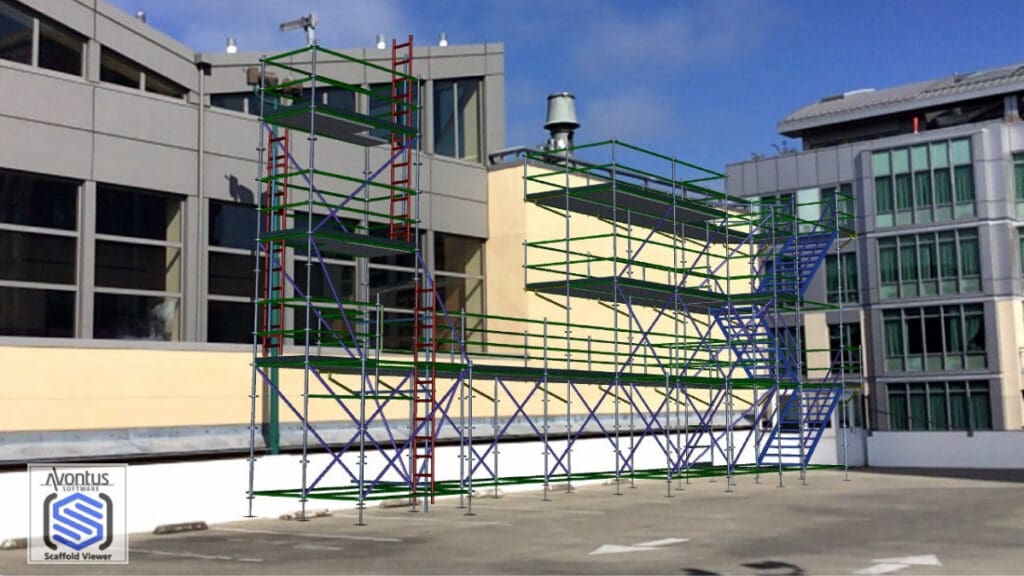The Best Practices of Successful Scaffolding Businesses
What separates thriving scaffolding companies from the rest? In a competitive and increasingly digitized construction environment, success is defined by… Read More

According to the Occupational Safety and Health Administration (OSHA), an estimated 2.3 million construction workers work on scaffolds in the United States. However, the United States Bureau of Labor Statistics (BLS) estimated that 4,500 injuries that occur on jobsites every year could have been prevented with proper scaffolding designs that comply with safety standards.
Ensuring safety while working at height is a stringent process of ascertaining that a scaffold or other means of access is safe to use with the lowest possible risk to human life and to the environment. A secure scaffold is synonymous with protected workers and a safe jobsite that promotes productivity.
However, creating scaffolding models and verifying their safety can be a time-consuming and costly process, involving safety experts and long approval processes.
We spoke with Total Access Ltd., a scaffolding supplier, to discover how they’re using a digital solution to quickly and cost-effectively model scaffolds that comply with New Zealand’s safety standards.
Total Access Ltd. is one the largest scaffolding suppliers in New Zealand — with a workforce of over 250 and 8,000 completed jobs since 2008. Despite the sheer size of the business, the company still relied on an inefficient and outdated scaffold design process:
This inefficient situation came to a head when the construction safety regulations in New Zealand were tightened. Now, scaffolding must comply with more stringent WorkSafe Good Practice Guidelines and have their safety assessed by a Chartered Professional Engineer (CPEng).
As a result, the company was burdened with additional engineering costs, since an external CPEng had to be commissioned for every project. To make matters worse, more complex designs meant that Total Access had to:
Naturally, a transformation was in order.
That transformation was enabled by Avontus Designer®. It’s a scaffold design software that helped Total Access improve their design and safety approval process, cost effectively, in three major ways.
One reason Total Access chose Avontus Designer is its powerful yet easy-to-master 3D visualization capability. Draftsmen could create transparent 3D designs that allowed everyone to instantly see where safety issues might occur. And they did this in a fraction of the time it once took to manually build a replica in the yard.
Design transparency also helped the firm to secure sales. Detailed 3D drawings fostered confidence among customers that the models met the strict safety standards. Total Access took it even further using Avontus Viewer® – a design visualization tool powered by AR/VR technologies – that accurately showed how the scaffolds would look when erected.
“Customers are impressed by 3D visualizations. The drawings help make sales,” said the Draftsman and Estimator from Total Access.
Fast design creation meant a faster safety approval process too. Using Avontus Designer and its built-in local safety compliance, draftsmen could provide multiple scaffolding model options. The commissioned CPEng could then verify the designs and choose the best one, or suggest changes, without making many site visits.
Improving the drawings was only a matter of editing scaffold models digitally, a process that takes minutes. In the long-run, Avontus Designer is a cost-saving solution. Total Access estimated that the monthly software subscription cost is equivalent to just a few hours of a CPEng’s time. This affordable scaffolding industry-specific solution definitely one-upped other more prominent computer-aided design (CAD) applications.
Operations managers benefit from using the software too. Since Avontus Designer can instantly generate a Bill of Materials (BOM), they don’t have to waste time manually creating it.
“They also have a more accurate picture of the real cost of materials and the number of trips they need to take, speeding up the building process and preventing the firm from underpricing,” said the Total Access staff.
Digitizing the scaffolding design process is how your company can also cost-effectively create designs with fewer safety risks and comply with safety standards.
On a larger scale, overall business digitization is a trend that’s sweeping across the entire scaffolding industry. And this trend is critical in the current environment of safe work practices amidst a pandemic.
Click the link below to learn more about the powerful capabilities of Avontus Designer. And see if it’s the right fit for your scaffolding safety (and business improvement) needs.